The seventh story from Miriah Falce, Enologist at Cairdeas Winery in the Lake Chelan AVA.
September 2022: All In.
Writing this after three long, 12+ hour press days, on my one afternoon off for the next 15 days and probably for the foreseeable future… but hey that’s harvest right?! And I wouldn’t trade it for the world.
Vineyard Summary:
We started the month with a final hedging to tidy up the vines, and then proceeded to put on nets. I had never really seen nets used when living in the Yakima Valley because big vineyards there are too expansive to spend time/money putting them on, a little bit of bird damage would hardly affect their overall crop. For example, we have a new contract with Coyote Canyon and they have 1300 acres! However, we only have 2 acres and bird damage could potentially have quite an impact on our small amount of vines.
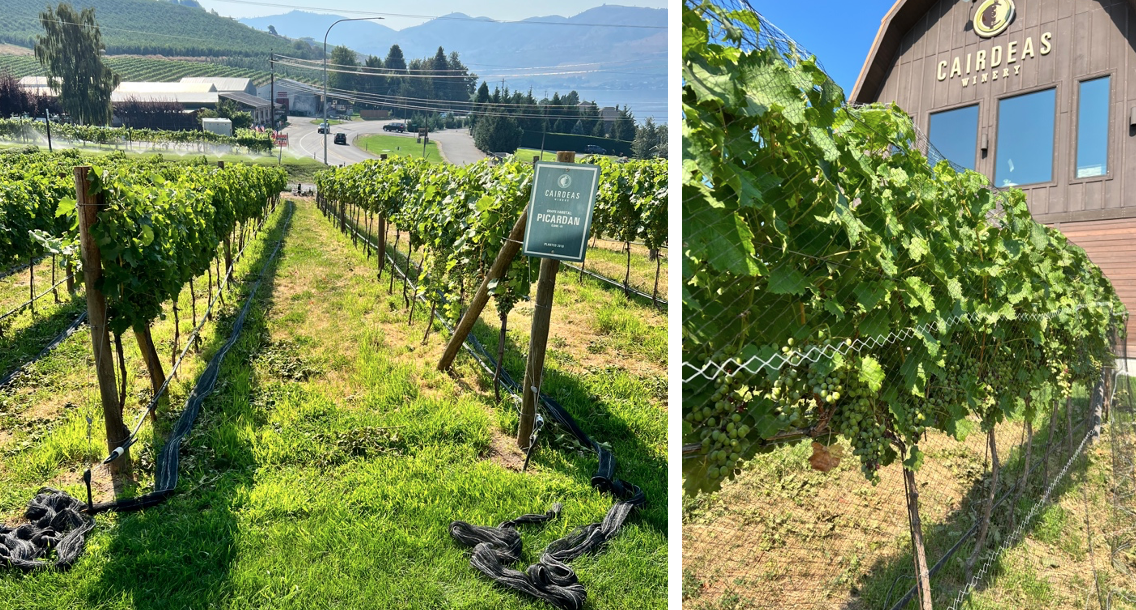
Production took our first vineyard visit to Lawrence Vineyard the first week. We get Syrah (done in concrete for those that have tasted that), Grenache, Viognier, and Roussanne from there. That first vineyard trip is a big moment of… “harvest is almost here!” The purpose of these trips is to put eyes on the block and check our ripening status, as well as taste for flavors, acid and sugar. One way to tell ripening is by looking and tasting seeds. They change from green to brown and certain bitterness and crunch. Seeds are an important part of tannins next to skins and stems. When tasting grapes, riper ones tend to fall apart in your mouth and separate from the seeds, whereas unripe ones have a sort of gelatinous pocket encasing the seeds that doesn’t quite disintegrate. While your palate can’t give you actual data, it is extremely important to taste flavors and those different aspects as well as looking at the numbers. If it’s a sweet tart, you know it’s not ready. We do also pull cluster samples to take back to the winery and run numbers on to help with picking decisions.
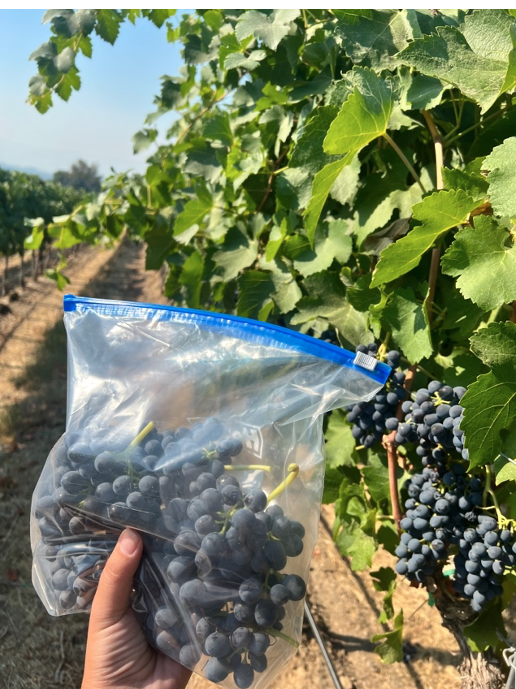
Last year we took a team trip to Lawrence Vineyards, this year we went to Boushey Vineyards. It’s fun getting to show the tasting room staff what we do and what it’s like out in the vineyards. Sometimes it makes me laugh hearing and seeing them out of their element. But it’s a great educational experience that shows them where we get the fruit from and also helps when they’re explaining wines to guests. It’s a fun bonding experience with everyone as we also went to a brewery and had an amazing dinner together.

Charlie and I stayed an extra day while everyone went back to Chelan to pull baseline samples from our other vineyards – Coyote Canyon, Spice Cabinet, Kamiak, and Inland Desert. We quickly realized how just about ready our rose was to pick! We were ready to head back to winery, run numbers, and start making a picking plan.
I have started working on my own side label – artwork is being created, trademark is pending, TTB has been filed with, and it’s absolutely everything beyond my wildest dreams. I have 3 Italian red varietals and this year fell in love with a super unique white varietal called Malvasia Bianca that I was able to find a little bit of! It tastes like a crazy Muscat and Sauv Blanc cross, that is extremely potent and full of mint and just unique flavors. I feel like many berries can all taste similar, but this one is so distinct right off the vine. I got to check out my little block and the clusters and berries were huge! I was ready to pull the trigger for a beginning pick but have decided to wait it out a bit more to really develop the flavors I know are there that make it so distinct.
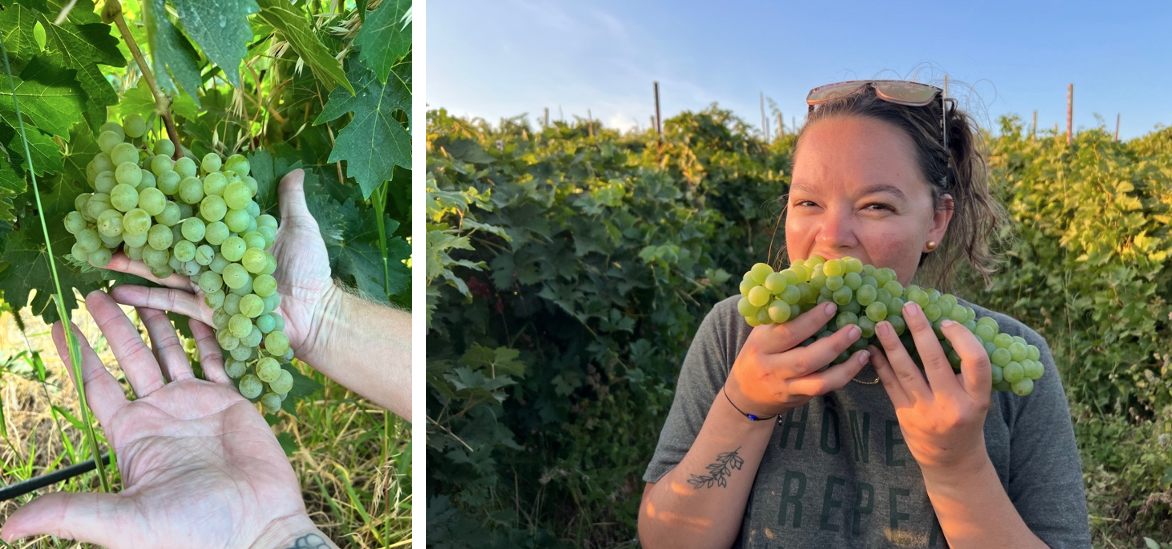
One thing to note, everyone is seeing heavier yields across the state, which after a year of low yields is great. Here’s hoping we can accept the bigger yields and have enough tank space for the increased production! We’re also seeing lower brix (soluble solids and a quick number for sugar content) but acids are dropping out how we like to see and flavors are developing. This is a great sign and one of those fun facts we’ll get to talk about when we talk about this vintage. Lower brix means lower alcohol wines… but that’s ok. Not every red wine needs to be 15% right? As long as flavors and acid are balanced, which we’re seeing happening, it’s looking like a busy but great vintage.
GDD and weather-wise… it’s so interesting! I have a picture of this time last year and I’m in a sweater and beanie and this last week I’ve been in shorts and tee, dumping grapes and thinking it feels hot. This weather is exactly what we need to keep the ripening going and extend harvest throughout the month since we’re behind. In 2019 we had the season ending frost in the early-middle of the month, and it’s definitely a relief seeing 80 degrees through the 10 day forecast. In October!! Looks like we’re running just a bit below average according to the graph.
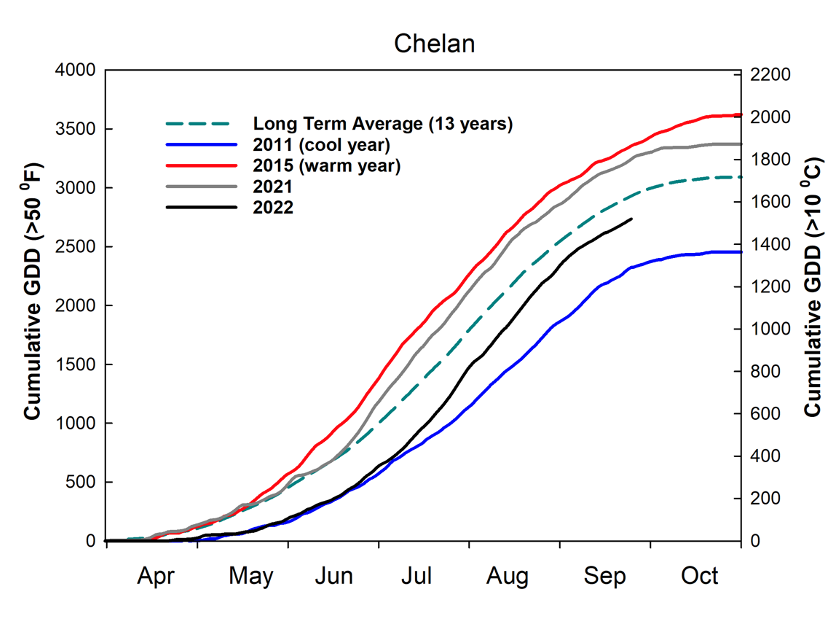
Winery Summary
As many people have said multiple times, we’re about 3 weeks behind last year. Last year we harvested on September 10 and this year we went all the way up until the couple days! It is a game of patience, and when you see others pull the trigger it can be hard to keep waiting and not get too excited. But your mouth and labs tell you everything you need to know, and everyone makes different styles so sometimes you just have to keep waiting.
Our first pick was Grenache and Syrah for our rose! It’s hard to choose a favorite wine from Cairdeas, and nothing really lasts long enough, but rose is always a top one. Last year we doubled production and picked 10 tons for 600 cases. This year we were slated for 12 tons… and got just shy of 16! It was fun pouring rose throughout the year and being able to share the story of staying up until 1am pressing off the juice. This year that just wasn’t an option and we split it into two long days. Coyote Canyon Viognier was the following pick, where we were expecting 4 tons and got 8, and next thing we knew it was October.
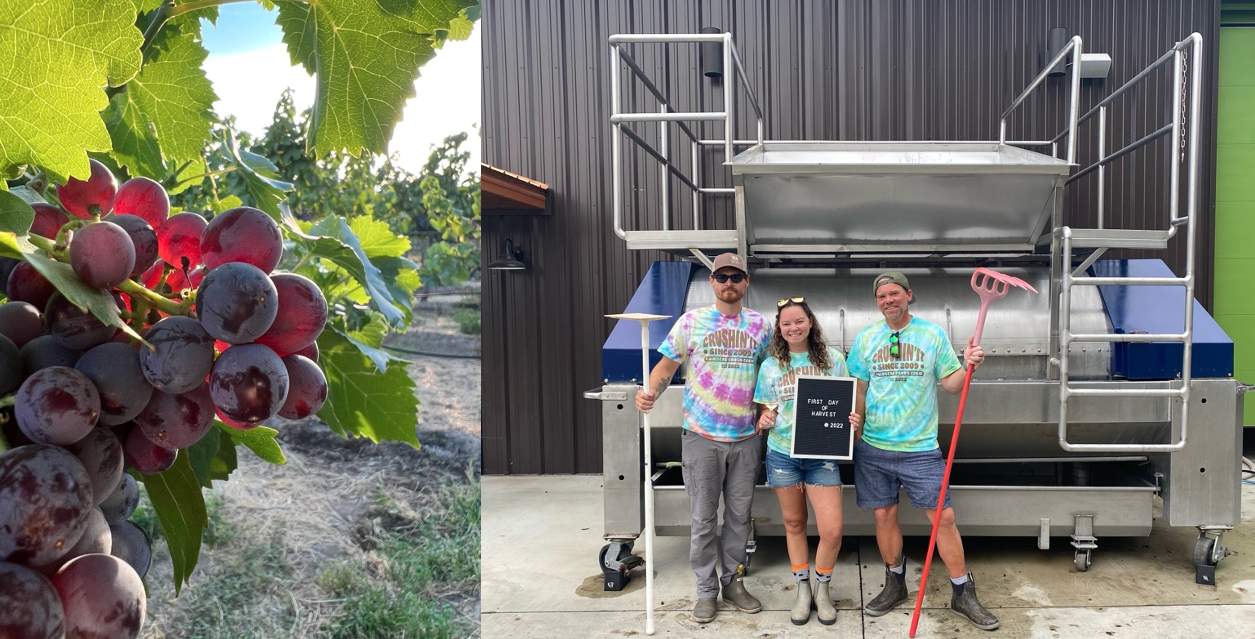
White and rose wines are made differently than reds, but we currently haven’t picked reds so this a great time to focus on whites. When we make white/rose wine, it’s our goal to get the juice off the skins and into tank quickly. This limits some of the harsher phenolics that can come from skin contact but also allows us to get the light color we desire in rose.
Grapes are dumped into the top of the press into a bladder, we can do about 2 tons at a time, that is inflated and deflated over that cycle of time in a program that is meant to lightly squeeze out the juice into the press pan below. The juice travels through a hose into the designated tank, where it then sits for 24 hours to settle out undesirable solids. The juice is then racked off the solids into a new tank, and inoculated with yeast to begin fermentation. We run a juice panel to get all the chemistry numbers including Yeast Assimilable Nitrogen, one of the prime requirements for a happy ferment, and in the following day will give the yeast a nice organic snack to kick them off. We keep white wine tanks at a cooler temp to manage fermentation speed and to also help with flavor extraction. Each day, we check the brix and temperature to see how the fermentation is progressing and run all of our ferments until they’re completely dry.
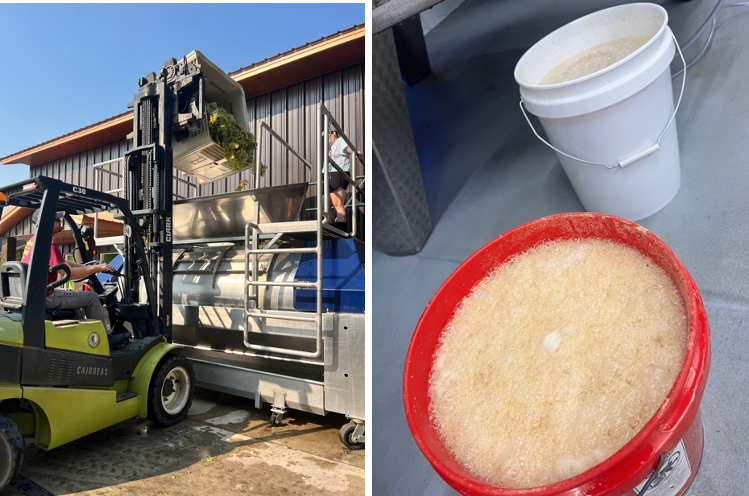
We just started our first few ferments a few days ago so everything is chugging along and our calendar is quickly filling up! We have scheduled fruit picks every other day for the next two weeks and after that we’ll keep on rolling for the rest! October is about to be crazy.
Our translation team is working on this. Please check back!


Join the Conversation